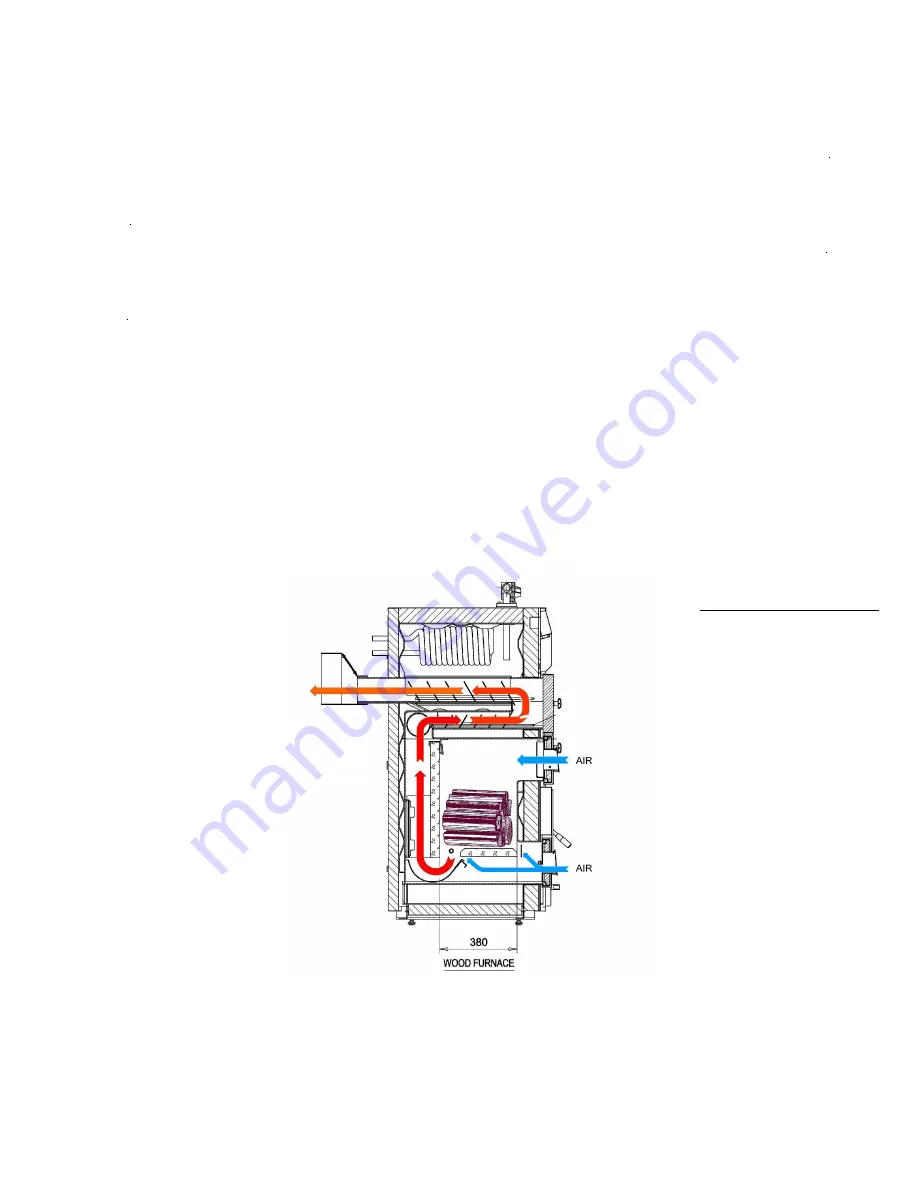
7
BURNING WOOD
by brushing and scraping off the accumulated smut through the cleansing and filling hatches.
•
Pull the firing throat out of the boiler furnace
•
Open the air dampers of the holes.
and remove ash that has remained from
previous burning. After removing ash, push the
firing throat back up to the rear wall of the
furnace.
•
Put kindling wood onto the rear bar (< 200 mm
long and < 20 mm in diameter) and insert
kindling paper or bark between billets.
•
Light the fire. Keep the filling hole slightly
If the boiler has not been used for a long while,
open and the maintenance hole air damper
use a small amount of wood to ensure that water
closed when kindling the fire.
that has soaked into the ceramic bars does not
•
Wait for about 15 minutes until there is a bed
of live coals on the grate bar.
•
Put billets bark up onto the grate bar equally
and tightly so that the billets touch the rear wall
of the furnace.
•
Then put a new charge of billets onto remaining
coals.
•
When coals burn down, close the air dampers in
order to avoid heat losses from the flue duct.
One charge of wood produces approx. 50 kWh of
heat i.e. 1000 l of water is heated approx. at
40°
С
.
Cleaning
Cleaning the wood side is done from the front of the boiler. Most important is to keep
surfaces behind the cleaning hatch (nr. 1, figure 4) clean. The fire surfaces can be cleaned
boiler’s fire surfaces is important to keep the high efficiency.
Remove combustion residue through fire management hatch. Notice! The cleanness of the
This is normally achieved by running the oil/gas burner or by using the heat stored in the thermal store.
A clear sign of the boiler being under the temperature is that the wood does not light up properly, there
is an excessive amount of smoke, the flue does not draw and the fire box surfaces condensate.
When using wood, it is paramount that the boiler has a base heat of >65°C.
IMPORTANT
WWW.JASPI.UK




























